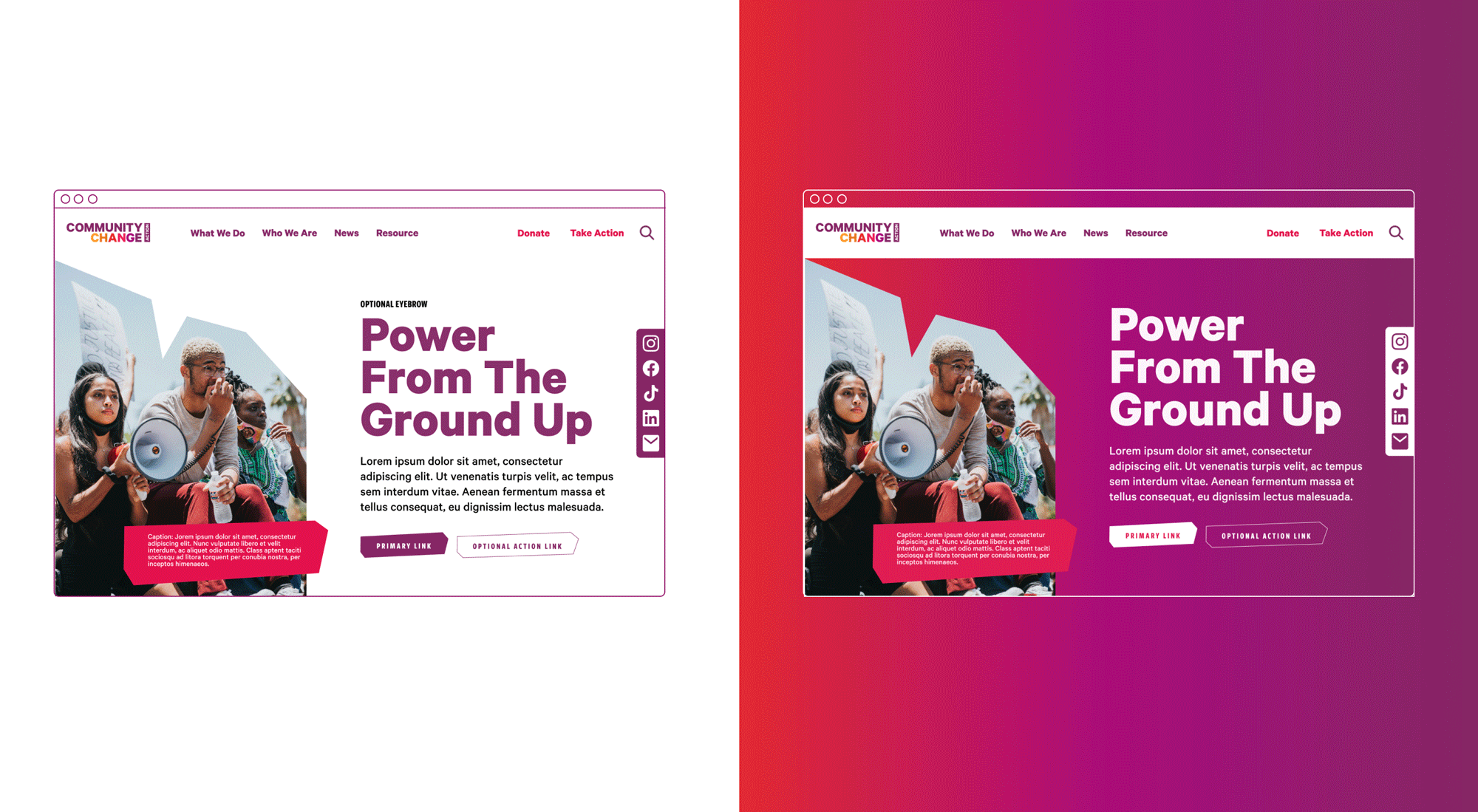Radish Lab has been working and collaborating with clients in the nonprofit sector for over 12 years – leaving us with a wealth of hands-on experience, knowledge of best practices uniquely suited to nonprofits, and clear ideas of the biggest challenges our clients tend to face. One of the most frequent challenges for our clients is the scale of their website or their digital portfolio. Oftentimes, as organizations grow and shift, the big picture planning for how to sustainably grow their website falls behind the urgency of getting new content out into the world. This can result in a sprawling website that is a huge challenge for internal teams to manage and for users to navigate easily, or a series of microsites and siloed digital experiences that make it challenging to maintain brand integrity and leaves users confused about how all the pieces of an organization fit together.
Our years of experience working exclusively with nonprofits has provided the Radish team with the knowledge to help solve any iteration of the scale issue for our clients. This is aided by our focus on strategy and user experience design separate from visual design to ensure we’re honing in on the right solutions for everyone early on, with no distractions. We’ve curated a few of our recent projects that deal with the different ways website size and digital portfolio management tend to play out for nonprofit organizations.
Merging Sites
One of the most frequent pain points that clients come to Radish with is that, as their organization grew – whether they expanded their programs, started providing new offerings, or added locations – the solution to growth continued to be “let’s make a new site” rather than “how can we incorporate this into our existing site”. That’s where Radish comes in: we emphasize reviewing information architecture, taxonomies, and user experience design separately from visual design which allows us to help our clients focus solely on what information lives where, and how it all thoughtfully fits together into one cohesive experience.
Scratch
Web Design and Development | Education
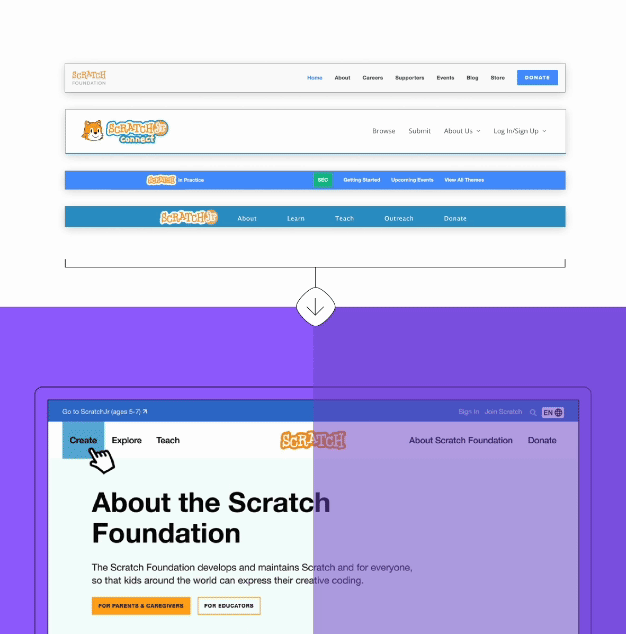
Scratch, one of the world’s leading coding education platforms for kids, came to us with a unique problem: they were maintaining 5 different domains, across separate teams, in addition to their digital platforms. We worked with them to thoughtfully consolidate all of their domains into one cohesive experience that doesn’t sacrifice curated experiences for primary audiences.
New York Community Trust
Web Design and Development | Philanthropy
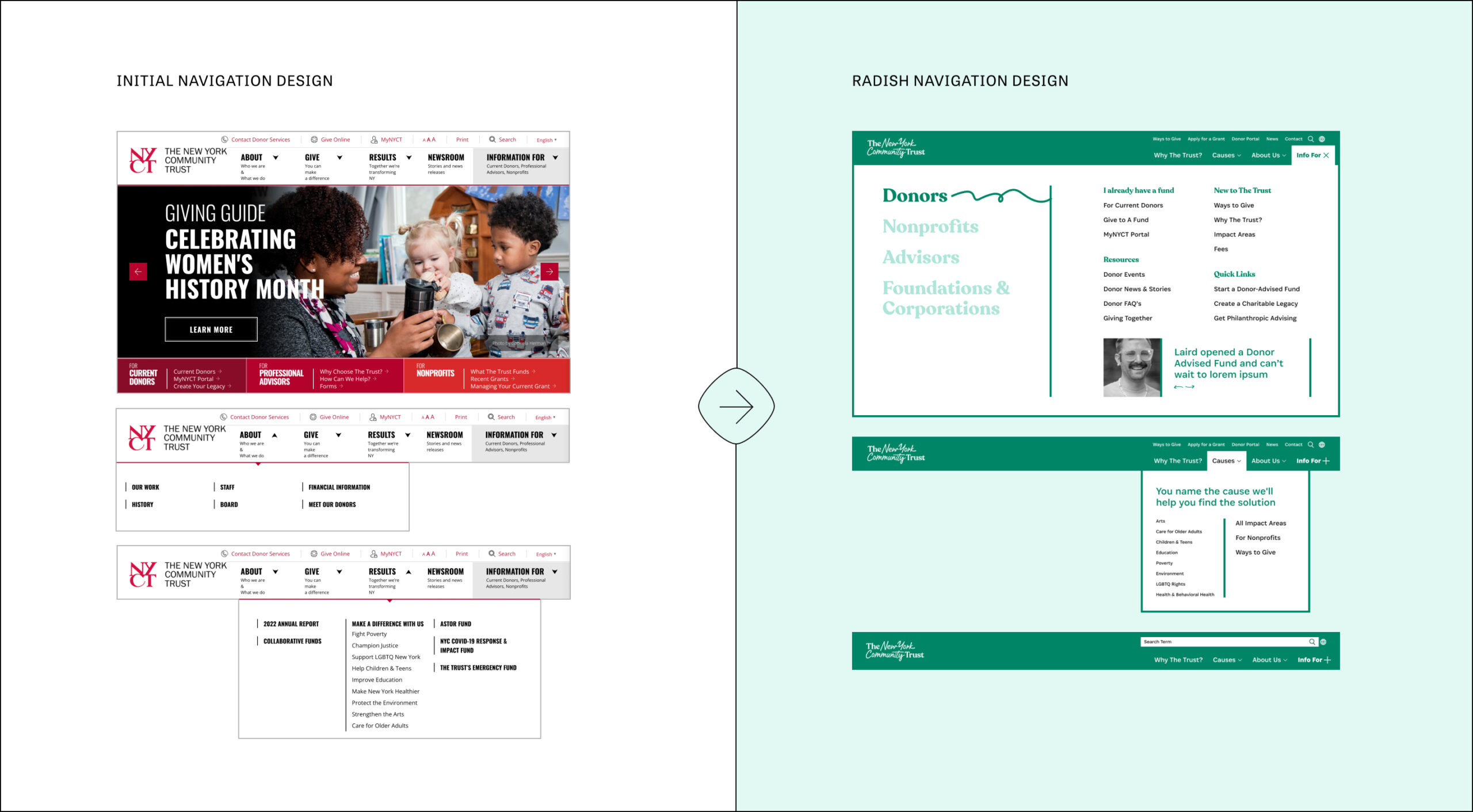
New York Community Trust, a pillar of the New York philanthropic community providing grants to organizations that improve quality of life for all, serves three specific locations: New York City, Long Island, and Westchester. Previously, the three locations all had their own experiences which left any generalized content about The Trust spread across three websites. Radish helped the Trust team to reorganize their information architecture to fold location specific content seamlessly into one main New York Community Trust website.
501(c)3 and 501(c)4
While many organizations have a problem with too many sites, some clients come to Radish with a distinctly opposite need to have intentional separate domains. One main reason for this is an exclusively nonprofit pain point: the need to have separate domains for their 501(c)3 and 501(c)4 status’. Because of the legal restrictions around what different 501(c)3 & 501(c)4 organizations can and cannot do it’s incredibly important for organizations registered with both to have sustainable separate websites. Radish Lab works with clients to audit and rethink both experiences and content together, to ensure that the modular system and WordPress CMS will work seamlessly for both websites – making it easy for clients to maintain and train employees how to use.
Community Change & Community Change Action
Web Design and Development | Human Rights & Advocacy
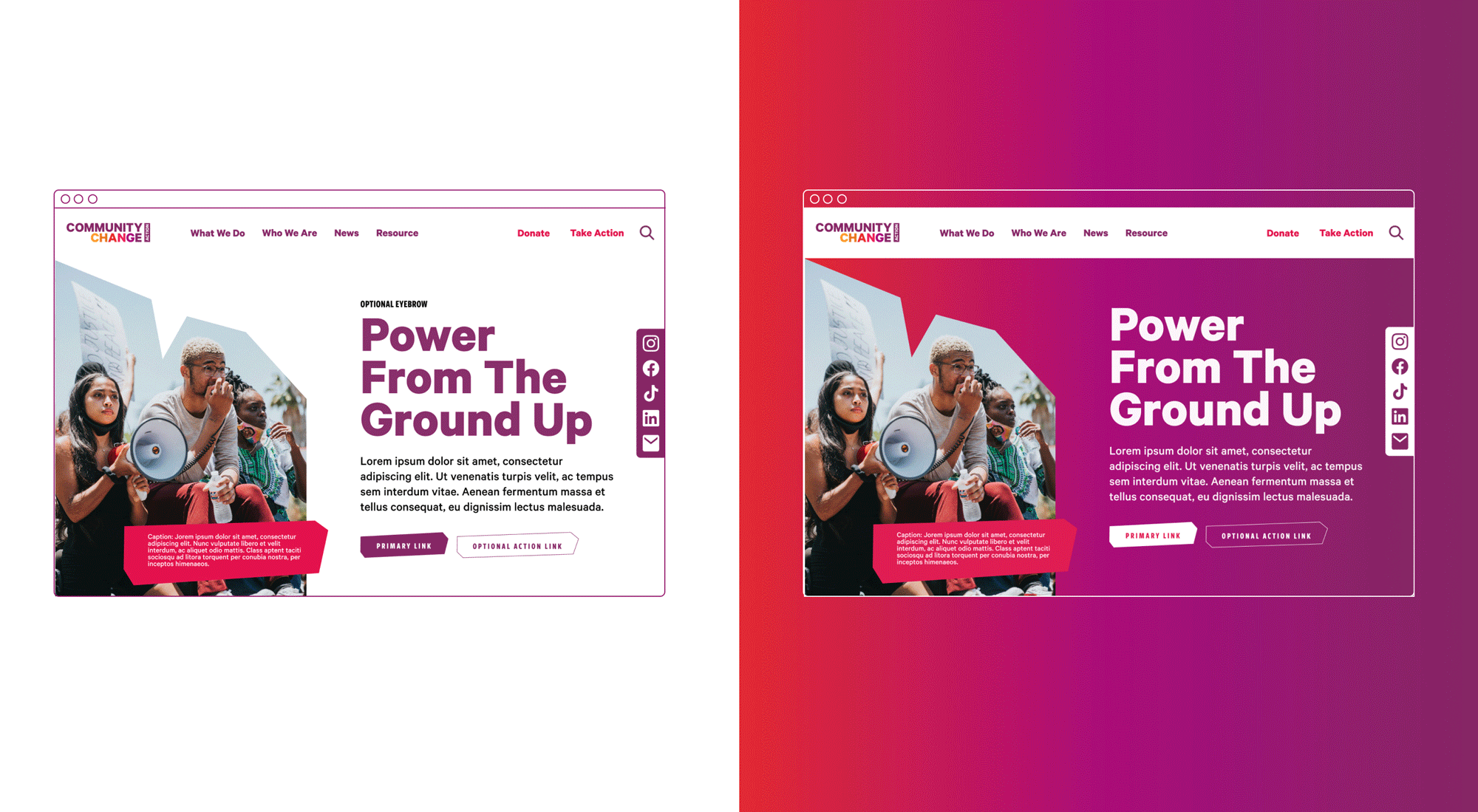
Community Change is an organization that empowers low-income people across the US, especially people of color, to fight for lasting social and economic justice. They came to Radish with perhaps the most exclusively nonprofit pain point around multiple sites: the need to have separate domains for their 501(c)3 and 501(c)4 branches of the organization. Because of the legal restrictions around what a C3 and C4 organization can do, it was incredibly important for the Community Change team to thoughtfully maintain distinct websites, without making it challenging to manage or maintain internally with their small team. Through robust strategy and user experience phases, Radish helped the Community Change and Community Change Action teams to solidify what content and actions lived on each experience and built a carbon copy CMS experience for both sites to ensure ease of use and consistency across their digital profile.
Brand Family Sites
While Radish usually recommends merging multiple sites into one experience to minimize the number of domains internal teams have to manage, there are some cases where separate domains make sense. When this happens, we work with the client to ensure that we create a design system that is both flexible enough to adapt to multiple contexts and structured enough to maintain brand integrity. Once the design system is established, the modular Radish approach to CMS ensures that both sites are easy for the client’s internal team to maintain, manage, and build.
TNTP & TNTP Teaching Fellows
Web Design and Development | Education
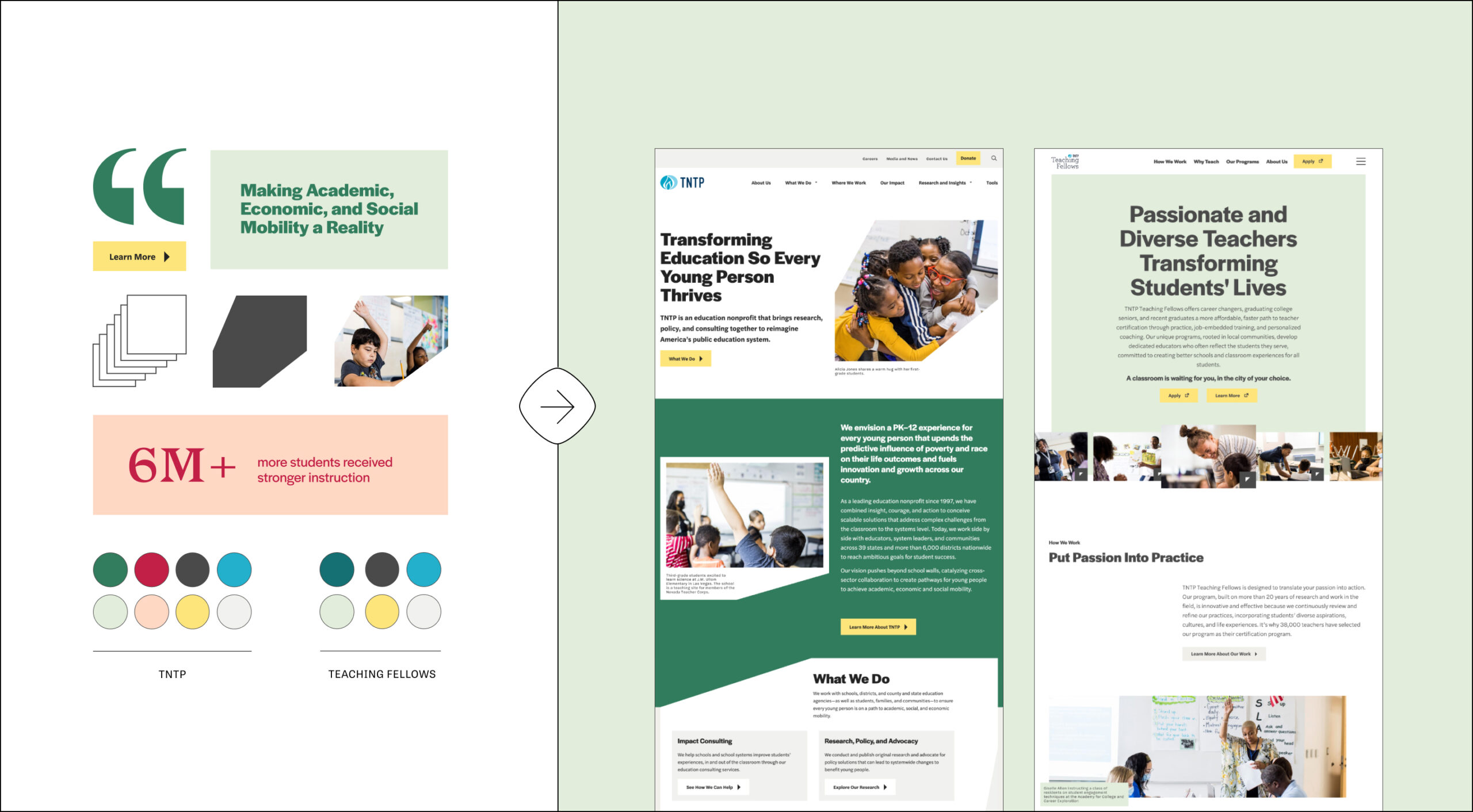
TNTP (formerly The New Teacher Project) is the leading national organization advancing equity in education through a strategic combination of on-the-ground work in schools and communities, original research, and public advocacy. They came to Radish to revamp their brand and website with one key addition: their brand system and CMS needed to work for both their main TNTP website and brand but also their program, TNTP Teaching Fellows, website and sub-brand. Radish Lab worked with both the TNTP and TNTP Teaching Fellows teams throughout both processes to ensure that the distinctions between the main site and the program site were clear, thoughtful and visually distinct without sacrificing brand integrity or ease of management.
Sometimes, both:
On rare occasions, clients come to us with a mixture of pain points that results in both merging of websites and creating a secondary website. Radish Lab works with them to come up with the best solution that solves their internal pain points while ensuring it’s following digital best practices.
Lucile Packard + CSHCN merge, Summer Scamper Microsite
Web Design and Development | Philanthropy & Health
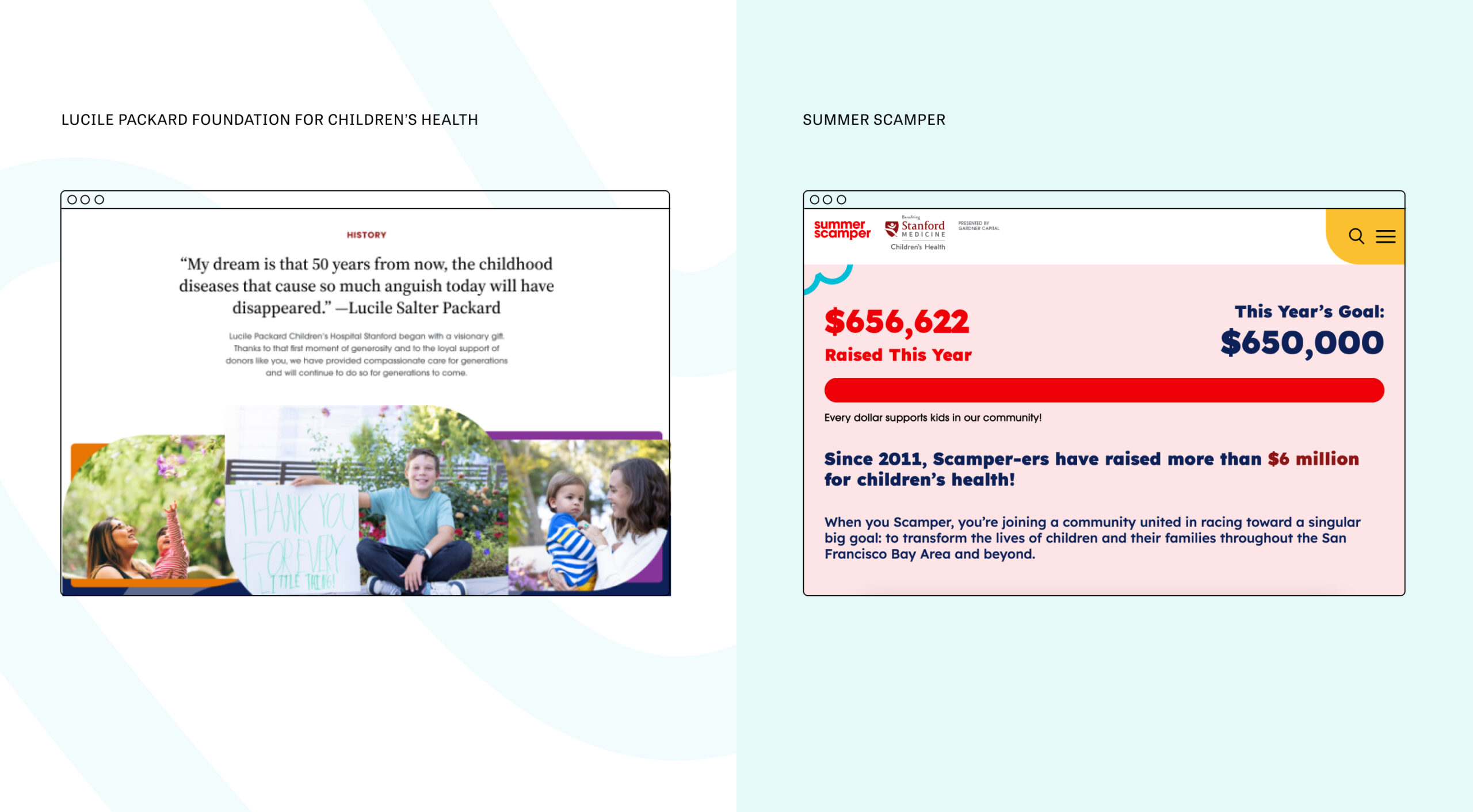
Lucile Packard Foundation for Children’s Health (LPFCH) is a major fundraising organization in the children’s health space. In addition to funding work and research done at the Lucile Packard Children’s Hospital and the Stanford School of Medicine, they also have an exceptional grant making program: the Program for Children and Youth with Special Health Care Needs (PCYSHCN). When LPFCH approached Radish to build a new website, the funding portion of LPFCH and the grantmaking PCYSHCN each had their own standalone experiences. A primary goal for the new website was merging the two branches of LPFCH’s work into one experience that allows both of their distinctly separate key audiences to find what they need quickly while ensuring all users can see offerings of both.
However, during the discovery process with the LPFCH team Radish learned of microsites that existed within their wider ecosystem for small specialty programs as well as their biggest funding event of the year: Summer Scamper, an annual 5k race that directly funds the work that LPFCH does. While the majority of the microsites discovered were flagged as perfect content to consolidate into one larger experience, the Summer Scamper site needed to maintain a different brand and to stand alone so that participants and sponsors could quickly find relevant event information without having to navigate through the primary LPFCH site to do so.
Check out the live sites lpfch.org | summerscamper.org
Keep in touch with us, sign up for our newsletter.
Have a website design or development, branding, or strategy project? We’d love to hear about it.
